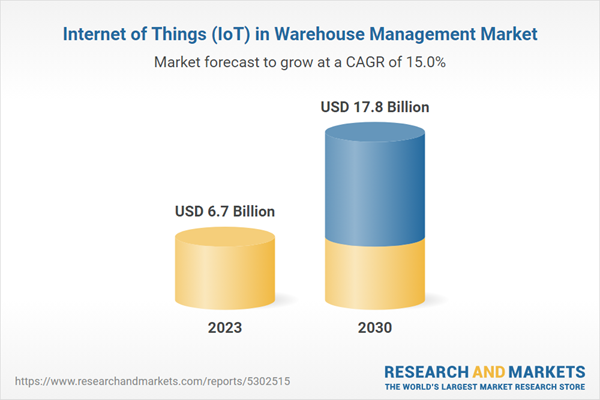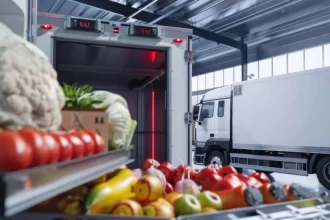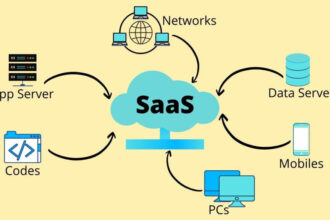The Rise of IoT in Warehouse Management
Warehouse management has evolved remarkably with the integration of the Internet of Things (IoT). IoT’s capability to connect devices and systems in real-time offers unmatched visibility, tracking, and control, transforming how warehouses operate. With the ever-growing demand in e-commerce and logistics, IoT is not only optimizing inventory but also enhancing the overall efficiency and reliability of warehouse operations.
1. Real-Time Inventory Tracking and Optimization
A significant IoT advantage in warehouse management is real-time tracking of inventory. Traditional methods are often labor-intensive and prone to human error. By using IoT-enabled devices such as RFID (Radio Frequency Identification) and sensors, warehouses can automatically track inventory as it moves in and out, reducing errors and delays. This real-time insight also helps avoid stockouts or overstocking, optimizing inventory levels and saving costs.
Real-time tracking empowers companies to make informed decisions quickly, improving order accuracy and customer satisfaction. For example, an IoT-based system can immediately alert staff when stock levels of a high-demand item fall, allowing for timely replenishment.
2. Improved Warehouse Layout and Resource Allocation
Warehouse layout plays a key role in operational efficiency. IoT-driven systems provide data on product movement, which can help design layouts that minimize the time needed to pick and pack items. Using IoT data, warehouses can strategically place fast-moving items closer to shipping areas, reducing processing times and enhancing productivity.
IoT sensors can also monitor equipment and employee locations, ensuring resources are optimally utilized. For instance, IoT data might reveal that certain areas experience more congestion, enabling managers to adjust workflows or relocate resources to reduce bottlenecks.
3. Enhanced Automation with Robotics and Drones
The adoption of IoT has facilitated warehouse automation with robotics and drones, transforming repetitive tasks and making warehouse operations more efficient. Robots, guided by IoT data, can handle tasks like sorting, packing, and even transporting goods within the warehouse. Similarly, drones equipped with IoT sensors can assist in inventory management by quickly scanning inventory in high or hard-to-reach areas.
Automated IoT systems reduce the reliance on manual labor for mundane tasks, enabling employees to focus on more strategic roles. This shift not only boosts productivity but also minimizes human errors, resulting in cost savings and improved accuracy.
4. Predictive Maintenance and Equipment Management
Downtime due to equipment failure can lead to substantial losses in a warehouse environment. IoT-driven predictive maintenance uses data from sensors attached to equipment like conveyors, forklifts, and robotic arms to monitor their performance continuously. By analyzing this data, IoT systems can predict when equipment is likely to fail and notify managers to perform timely maintenance.
This proactive approach reduces downtime and extends the lifespan of equipment. Predictive maintenance saves costs on unexpected repairs and replacement, contributing to a more resilient and reliable warehouse operation.
5. Improved Safety and Security Measures
Warehouse environments often pose safety risks, especially when heavy machinery and high-stacked inventory are involved. IoT enhances safety by monitoring environmental factors like temperature, humidity, and air quality. It can also detect potential hazards such as gas leaks, alerting personnel to act quickly.
IoT can also improve security through surveillance and access control. Connected cameras and sensors can monitor entry and exit points, preventing unauthorized access and protecting valuable assets. This added layer of security is particularly useful in high-value storage facilities, where theft or tampering can lead to significant losses.
6. Sustainability and Energy Efficiency
Sustainability is increasingly important for warehouse management, and IoT contributes significantly to eco-friendly practices. IoT-enabled systems can monitor energy usage across the warehouse, optimizing heating, cooling, and lighting systems to reduce waste. Smart lighting systems, for example, can automatically turn off lights in unoccupied areas, cutting down on electricity consumption.
IoT also aids in tracking waste and promoting recycling. Data on material consumption and waste generation can inform strategies to reduce excess usage and recycle materials, making warehouse operations more sustainable.
7. Data-Driven Insights for Strategic Planning
The data generated by IoT devices goes beyond operational efficiency—it offers valuable insights for long-term planning. With access to detailed analytics on inventory levels, product demand, equipment performance, and workforce productivity, warehouse managers can make strategic decisions to improve profitability.
IoT data enables predictive analytics, allowing warehouses to forecast trends, manage seasonal demand fluctuations, and adjust operations accordingly. As more warehouses adopt IoT, the competitive advantage will increasingly depend on the ability to harness and analyze this data effectively.
Final Thoughts
The integration of IoT in warehouse management is ushering in a new era of efficiency, safety, and sustainability. As businesses face growing pressure to deliver faster, more accurate services while controlling costs, IoT provides the solutions needed to stay competitive. By adopting IoT technology, warehouses are not only enhancing their daily operations but also laying the groundwork for a more agile, data-driven future.






